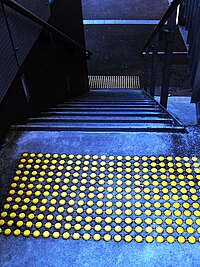
Photo from wikipedia
The present study examined the characteristics of somatosensory processing in healthy prepubescent children (mean age: 124.9 ± 3.8 months) compared with young adults. Somatosensory evoked potentials at the frontal (Fz)… Click to show full abstract
The present study examined the characteristics of somatosensory processing in healthy prepubescent children (mean age: 124.9 ± 3.8 months) compared with young adults. Somatosensory evoked potentials at the frontal (Fz) and centroparietal (C3') electrodes were recorded by delivering an electrical stimulus to the right median nerve at a rate of 3 Hz. The characteristics of somatosensory evoked potential waveforms at C3' were markedly different between the two groups, while those at Fz were similar. Specifically, the waveforms at C3' in the children involved not only standard P12, N18, P22, N27, P45, and N60 components, but also additional positive (P3) and negative (N3) components between N27 and P45, which were not found in adults. The amplitude of P22 at C3' was significantly larger in the children than adults, indicating hyper-excitability/responsiveness of neural activity on somatosensory processing. In contrast, the amplitudes of N15 at Fz and N27 at C3' were smaller in the children than adults, suggesting an immature somatosensory system in the children. The peak latencies of P12, N15, and P18 at Fz, and P12 and N18 at C3' were significantly shorter in the children than adults, which was dependent on the height. These results indicate the developing somatosensory processing with hyper- and hypo-excitability of neural activity in prepubescent children.
Journal Title: NeuroReport
Year Published: 2019
Link to full text (if available)
Share on Social Media: Sign Up to like & get
recommendations!